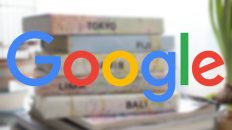 The algorithms, which surface content for users on sites like Facebook and Google, are made possible by modern programming. But then a section of experts have their concerns. Why so? Here’s the reason: As users increasingly fetch news updates and information from curated or refined social channels, the trend of filtering at times isolates us and leaves our world view incomplete.
The algorithms, which surface content for users on sites like Facebook and Google, are made possible by modern programming. But then a section of experts have their concerns. Why so? Here’s the reason: As users increasingly fetch news updates and information from curated or refined social channels, the trend of filtering at times isolates us and leaves our world view incomplete.
One such expert, namely Eli Pariser, referred to ‘bubbles’, the idea that when both search and social networks serve us content we ‘like’, and not what we need, citing example of a frequent traveler only getting tourism-related results while Googling ‘Egypt’ when the country was torn by internal strife. So the key is to human editors and algorithms working together get users content that really matters.
In this context, Pariser noted some of the critical aspects social personalization often gets wrong while delivering content. Firstly, algorithms are not good at anticipation. If there’s a story about the G20 meeting today, a human editor could well anticipate that financial markets might fall or rise tomorrow. Algorithms fail to establish such abstract correlation.
For it to work, an algorithm needs to be right more often than not. Suggestion engines almost always recommend ‘safe’ material within a narrow spectrum. On the other hand, human editors might offer up content that might be forward-looking or they might fail miserably. The point is algorithms are not able to connect the dots existing between specs of content to create a bigger picture of events something which an editor can do. They can draw users in with content that makes you stick around by pairing a search item with something of substance.
In essence, algorithms can dig out what’s popular, albeit not necessarily what’s actually important. So how can the problem be fixed? The key is to strike a balance between algorithms and human editors? Pariser points out that most top online media companies and platforms are moving toward greater degree of personalization since it drives clicks and user engagement, which can increase business and drive more revenue.
According to him, the Internet can swing both ways, either encapsulating us in a tiny bubble of our own narrow interests, or connecting us to new realm and innovative ways of thinking. The hybrid media strategy might be the way to go, Pariser asserts. For this he wants us to understand the schism between implicit and behavioral intents.
In the modern era wherein we have a deluge of data, do you go by behavioral data, or trust what people actually reveal they want? It is clear the current platforms do not get us there by default or on their own. By hooking users with content that users like and then pairing it with what they need, editors can drive traffic and boost value as well.




